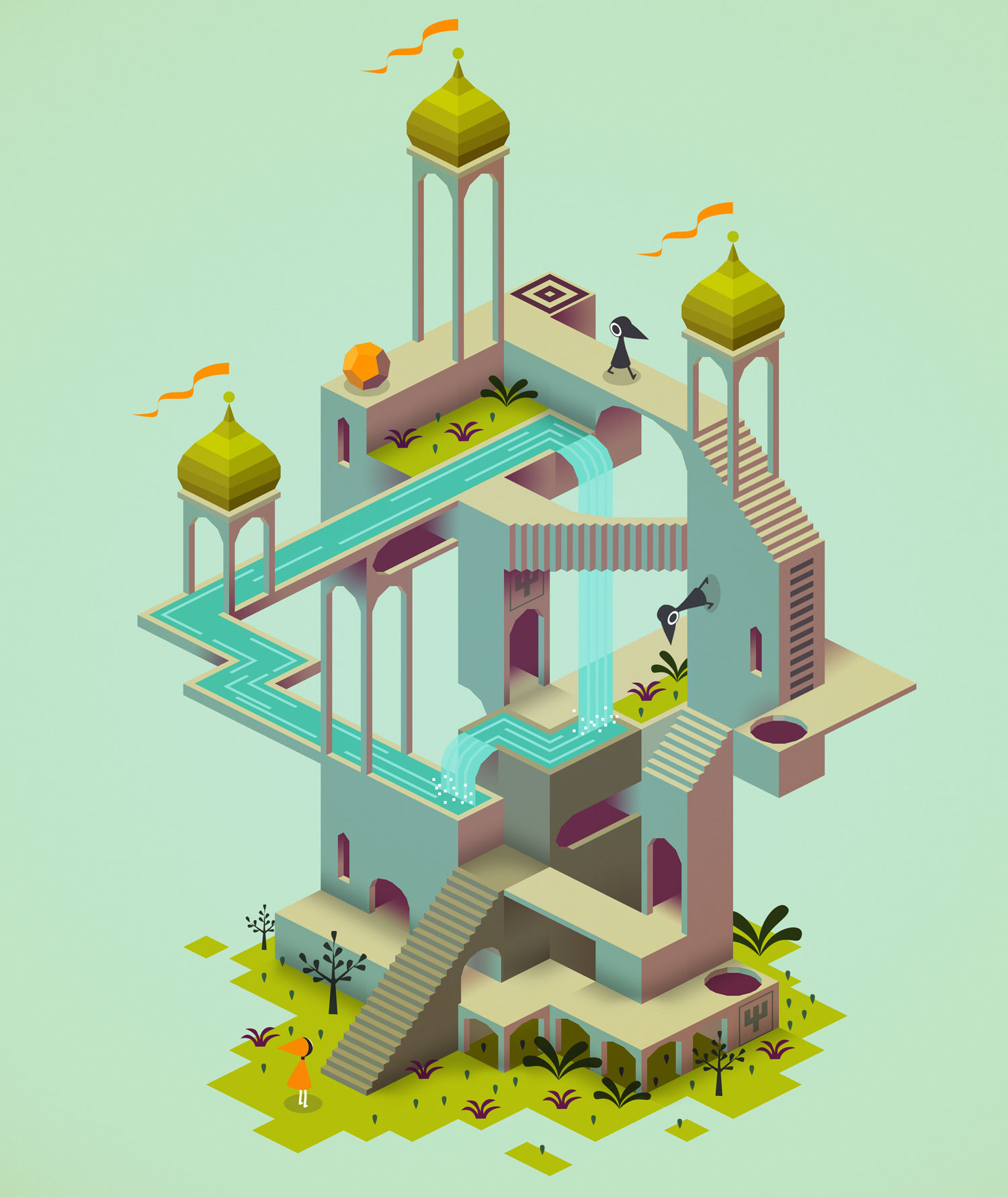Monument Valley is an intriguing mobile game that masterfully employs optical illusions to create a unique gameplay experience. The foundation of these illusions lies in the manipulation of perspective and geometry, particularly through isometric projection techniques that facilitate the appearance of impossible paths. This is achieved by presenting a visually cohesive, yet fundamentally disconnected environment, allowing players to traverse scenes that defy our conventional understanding of spatial relationships.
Key Mechanisms of Optical Illusion in Monument Valley:
1. Isometric Projection:
– Monument Valley uses an orthographic (isometric) projection where the extension lines do not intersect. This creates a visual representation wherein different planes and paths appear to be connected from a specific viewpoint, even though they may not be so in actual three-dimensional space. The brain interprets these configurations, leading players to perceive merged pathways where none exist.
2. Perspective Shifting Elements:
– Integral to the gameplay are interactive elements like rotating blocks and sliders. By manipulating these components, players can alter their perspective of the environment. This not only affects the alignment of various planes but also creates visual illusions that allow players to traverse previously unconnected paths. These dynamic shifts in perspective challenge players to rethink spatial logic as they navigate through the game’s puzzles.
3. The Role of Cognitive Processing:
– The optical illusions in Monument Valley exploit how the brain processes visual information, particularly the cues associated with two-dimensional and three-dimensional representations. By providing visual stimuli that appear coherent when viewed from specific angles, the game encourages players to engage with its environment in a way that feels intuitive, despite the inherent impossibilities of the geometry.
Additional Technical Aspects:
– Camera Settings:
– The game utilizes an orthographic camera set at specific angles, like a 45° rotation around the Y-axis. This careful positioning helps maintain the illusion of merged planes. Furthermore, shadows are often disabled within the game environment to avoid disrupting the visual continuity that supports the optical deceits.
– Game Engine Implementation:
– These effects can be recreated in various game development platforms, such as Unity, allowing designers to experiment with similar illusions. The principles observed in Monument Valley can serve as case studies for future game design, emphasizing the balance between visual art and interactive mechanics.
Summary:
Monument Valley stands out not only for its stunning visuals but also for its innovative use of optical illusions to transform spatial puzzles into engaging gameplay. By leveraging isometric projections and movable elements, the game allows players to experience surreal navigation through impossibly designed environments. This exploration of geometric illusions showcases how games can manipulate cognitive processes, leading players on a journey that challenges and expands their understanding of space and perspective within a digital landscape. Through careful design choices and an emphasis on visual perception, Monument Valley captivates players and invites them to explore the boundaries of what is architecturally possible.





Leave a Reply